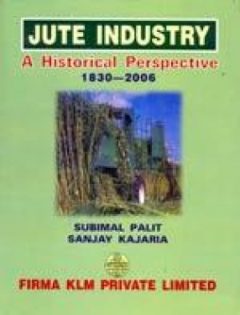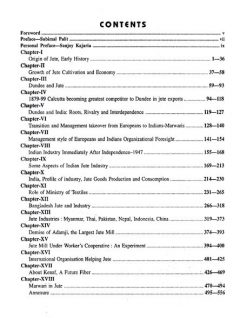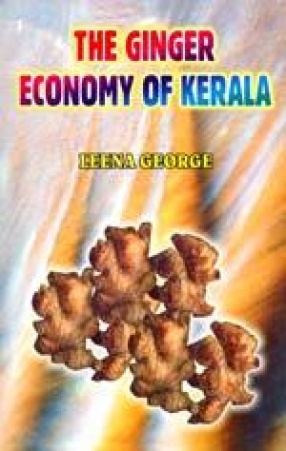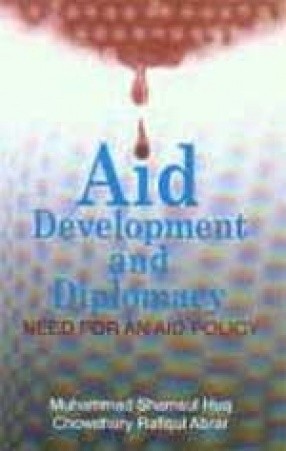The jute industry, life of which perhaps started in and around 1830’s and continues till now, 2007. It is 176 years. Who knows it may continue and cross twenty first century! Jute has been growing in the subcontinent of Greater India in the delta zone of Ganges, uniquely suited for jute cultivation with its hot and humid climate with fertile soil and abundant water resources of quietly flown tributaries of Ganges and Bramhaputra. Day in day out farmers of this region continued to grow jute mush to the benefit of their masters, jute traders, mill owners, than of themselves. It was the East India Company, as a trading company took interest in jute and sent samples, if jute fiber, that used to be spun and woven by natives of Bengal by hands, to the flax mills in Dundee as a substitute for flax. With some resistance jute was accepted in the flax industry using flax machineries. It was around 1830’s. 26 years later, in 1856, George Auckland and Biswamber Sen made maiden an attempt by setting up mechanized jute spinning at Rishra on the bank of river Hooghly, India. Jute industry in India became major revenue earner for the Empire hence it favored Indian jute industry over looking the interest of Dundee Jute mills. At one point, Winston Churchill, local MP from Dundee, got so disappointed for supporting unending causes of Jutewallas of Dundee and made secret note to Parliament saying it is impossible to satisfy the jute interest of Dundee. The same resonance is audible with the present day jute mill owners of India. They want their problems are to be solved by Govt. and flout worker’s due and invite displeasure from working force in mills. There are lot more stories researched by the author and tried to put into chronological order. Dundee jute industry demised in 1996, Indian jute industry suffered a shock of partitioning the jute growing areas in 1947 to Pakistan. Later, Pakistan [now Bangladesh] became powerful competitor of the Indian jute industry in export market but sustaining. The Indian jute industry is plagued with labour problem of different degree and yet the present day mill owners, all Marwaries, hare not deserted the industry and West Bengal, tamed the TUs, brought the left Govt. in the state to their side. These are the unparallel stories some are tolled and many untolled may find interest to the ardent readers on jute as a whole. There are lot more insight about jute industry of Bangladesh, well researched for the interest of Bangladesh jute mills. So as for Pakistan , Myanmar, Nepal, China. Next to jute it is likely that Kenaf will emerge as prospective fiber. USA is making a serious attempt in Kenaf cultivation.
Jute Industry: A Historical Perspective 1830-2006
Add to favorites
Contents
$81.00
$90.00
In stock
Free & Quick Delivery Worldwide
All orders amounting to US$ 50 or more qualify for Free Delivery Worldwide. For orders less than US$ 50, we offer Standard Delivery at $14 per book.
ABOUT THE AUTHOR Sanjay Kajaria
Sanjay Kajaria, 48, a graduate in Commerce. After schooling joined his father Muraladhar Ratan Lal in the business of jute bag making. Along three brothers, Bijoy, Ajay, helped father to boost the jute business and assumed as a leading export house status in the jute trade, a trusted trading house for the jute goods importers in USA, Europe, Africa, Latin America. Sanjay Kajaria, a visionary, among the family, took imitative to step into jute manufacturing industry and was instrumental for acquiring Hastings Jute Mill in 1992. He took active interest in jute industry and became member of the Executive Committee of IJMA. Later, became two times Chairman of IJMA. Being the member of IJMA he took interest in labour matters. During his tenure as Chairman, IJMA, two labour disputes were resolved avoiding showdown ending in industry wide strike and could all parties agree in principles of productivity linked piece rate, first time in decades of attempt. Besides, labour issue he concentrated in the technological development that are needed help of MOT/GOI and impressed the Textile Ministry, Govt. of India to recognize the urgent need in developing new generation machines for the jute industry. Meanwhile, he acquired the Lagan Jute Machinery Co. Thus he was instrumental for widening the MREL to wider corporate interest. He is now Chairman, Private Sector Consultative Board, IJGG, an UN out fit of CFC.
ABOUT THE AUTHOR Subimal Palit
Subimal Palit, 74, after graduation in Textile Technology, joined Ludlow Jute Mills under the American management. It was a sound learning process in refined management system in mid 50's. Thus he became proficient Industrial Engineer. Joined IJIRA in the inspection wing of IJIRA, IJMAQIC. Was responsible to introduce statuary Pre-shipment Inspection system in the jute industry in 1964. Thereafter, he was retained in IJIRA as first rank R&D scientist. Elevated to HOD, Mechanical Processing Division. Opened new division, Industrial Engineering. Initiated Infer Firm Comparison, IFC, a powerful tool to improve industry wide level of productivity. In 1992 he took charge of GOI/UNDP project on jute spinning and made extensive survey on the status of technology in Europe and USA to identify the possible technology that would be the future generation technology for jute. Retired from IJIRA and took charge of GOI/UNDP project component entrusted to IJMA. Later, joined Lagan Jute Machinery Co. Ltd. to help them to reshape next generation of technology far away from the conventional technology.
reviews
0 in total
Review by Anonymous
Be the first to review “Jute Industry: A Historical Perspective 1830-2006” Cancel reply
You must be logged in to post a review.
Bibliographic information
Title
Jute Industry: A Historical Perspective 1830-2006
Author
Edition
1st ed.
Publisher
Firma KLM Private Ltd., 2007
ISBN
9788171021437
Length
xvi+556p., Figures; Tables; Maps; Annexures; 25cm.
Subjects







There are no reviews yet.